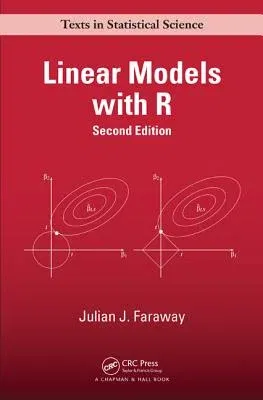A Hands-On Way to Learning Data Analysis
Part of the core of statistics, linear models are used to make
predictions and explain the relationship between the response and the
predictors. Understanding linear models is crucial to a broader
competence in the practice of statistics. Linear Models with R, Second
Edition explains how to use linear models in physical science,
engineering, social science, and business applications. The book
incorporates several improvements that reflect how the world of R has
greatly expanded since the publication of the first edition.
New to the Second Edition
- Reorganized material on interpreting linear models, which
distinguishes the main applications of prediction and explanation and
introduces elementary notions of causality
- Additional topics, including QR decomposition, splines, additive
models, Lasso, multiple imputation, and false discovery rates
- Extensive use of the ggplot2 graphics package in addition to base
graphics
Like its widely praised, best-selling predecessor, this edition combines
statistics and R to seamlessly give a coherent exposition of the
practice of linear modeling. The text offers up-to-date insight on
essential data analysis topics, from estimation, inference, and
prediction to missing data, factorial models, and block designs.
Numerous examples illustrate how to apply the different methods using R.

